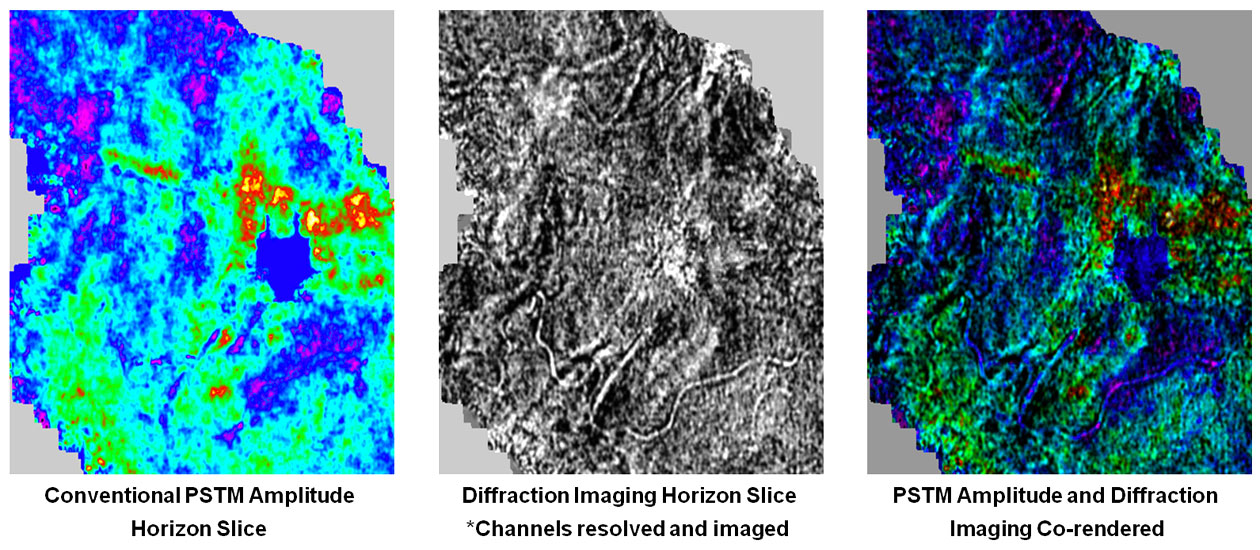To attend, please RSVP to epp@cseg.ca.
Unless we have exceeded the allowable number of people for the auditorium, we will not be replying to your email.
LunchBox Geophysics is free! Simply bring your own lunch (refreshments provided) and enjoy.
Abstract
Faults, cracked interfaces, stratigraphic pinch-outs, and channel edges are all diffraction generating geological interfaces that are encoded within the full seismic wavefield. Often these weak amplitude events are masked, unresolved, unfocused, or highly laterally interpretable due to the overwhelming amplitudes associated with conventional reflection seismic processing. The objective of diffraction imaging is to isolate the diffractive wavefield by suppressing the specular wavefield and re-migrating the isolated diffraction energy. The benefits are to improve lateral image resolution, resolve faults, illuminate edges, and improve the interpretability of otherwise masked or non-reflective events.
Large impedence contrasts within the stratigraphic column provide both benefits and challenges during seismic processing and interpretation. This talk will discuss the main issues faced by the seismic interpretors and processors when mapping is attempted in the presence of strong and obscuring coal reflection events and also examine how diffraction imaging provides improved vertical and lateral resolution for the evaluation of underlying prospects when the technique is compared to traditional reflective seismic imaging methods and concludes with case studies from the Mannville Group and Spirit River Formation.

Biography
I. Carter Edie graduated with a B.Sc. in Astronomy from the University of British Columbia in 2005. From 2006 until 2011 he worked at Arcis Corporation as a Processor and then Group Leader ranging in roles from marine, land, depth processing to AVAZ/VVAZ implementation. In 2012 he joined Divestco Processing as the Senior Supervisor of the special projects group with a primary focus on new technology.
Along with the introduction and implementation of Diffraction Imaging Carter has focused on integrating geophysical interpretation techniques into seismic signal analysis. This work has led to refined refraction static analysis in the Kurdistan region of Iraq, defined unconformity imaging in the Mid-Magdalena basin in Colombia, and closer to home improved conventional channel imaging in the Manville and Fort St. John Groups. He is a member of the CSEG.





